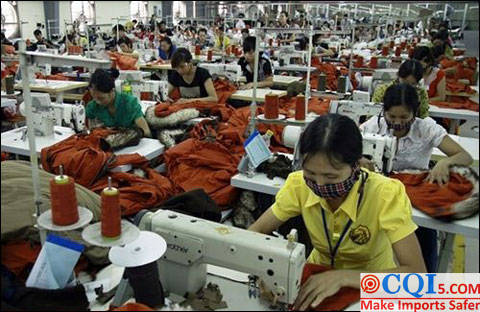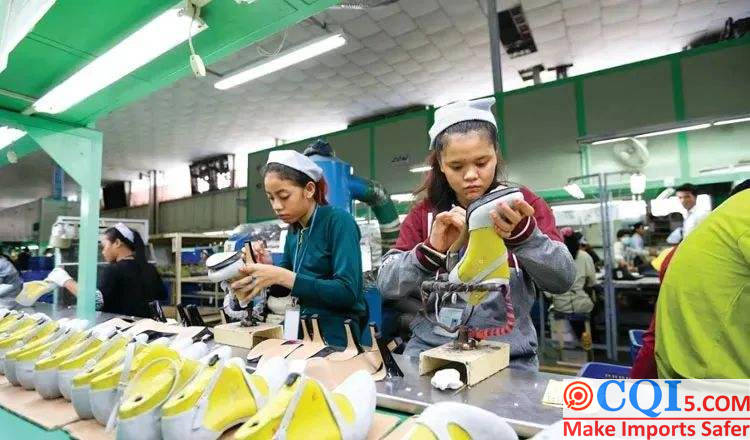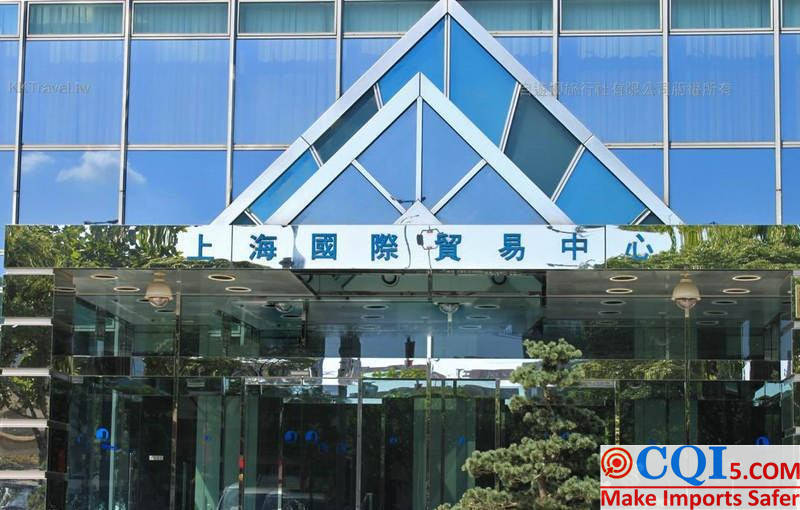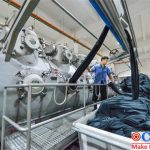Get Rid Of The Dilemma Of Textile Industry, Jedi Rebirth!
Today we are going to explain how the Chinese textile and garment industry can break out through the actual situation of a factory owner, Allan!
Back in 2020, Allan said, “This year has been a very tough year, and what’s even scarier is that it seems hard to tell when the global epidemic will end at this point. This means that the downturn in the textile and apparel industry may not end this year and will most likely continue into next year.”
Allan owns a garment processing factory in Cambodia with close to 1,000 workers and is an OEM for brands such as Zara and Uniqlo. With basically no orders from the factory, he says bluntly that times are tough. “The Cambodian government requires that workers are still paid 70 percent of their wages during their breaks, with the government paying 40 percent and companies paying 30 percent. Workers in Cambodia are paid about $190 a month, and the factory is close to 1,000 people, which means I owe thousands of dollars every day when I open my eyes.”

China has the most complete supply chain of textile and garment industry in the world. The textile and garment industry is also the first business card of Made in China to the world, and its foreign trade situation also affects a large number of OEMs in Southeast Asia, of which Allan’s company is one.
The Dilemma Of Textile Industry Is Not Limited To China
The upstream of the textile and apparel industry chain involves the production of natural fibers (such as cotton, hemp and wool) and chemical fibers, the midstream includes spinning, weaving, printing and dyeing, and the downstream includes final products such as apparel, home textiles and technical textiles.
China is the most robust textile and apparel industry chain in the world. Especially after China’s accession to WTO in 2001, the apparel export quota was abolished, which greatly promoted the development of China’s textile and apparel industry, and China gradually became the global textile and apparel manufacturing center. According to statistics, from 2001 to 2010, China’s cloth production rose from 29 billion meters to 90.7 billion meters, yarn production rose from 7.61 million tons to 37.33 million tons, and chemical fiber production rose from 8.41 million tons to 48.86 million tons, all of which are the first in the world.
However, in the second decade of this century, the downstream of the textile and apparel industry chain gradually shifted to economies with lower labor costs due to rising labor costs. The shift was accelerated by the threat of tariff hikes on textile and apparel goods during the trade friction between the U.S. and China, and it was during this time that Allan moved to Cambodia to set up his factory. His factory uses a foundry production model, taking orders from domestic foreign trade companies, importing raw materials from China, using Cambodia’s low-cost labor to do garment foundry work, and selling overseas.
Although there is a trend of processing factories moving to Southeast Asia, China is still the most important exporter of chemical fibers and fabrics. According to statistics, by 2018, yarn fabric exports accounted for 30% of global trade and chemical fiber exports accounted for 40% of global trade, with downstream producing countries such as Vietnam and Cambodia relying on imported fabrics.
At present, the main buyers in the global apparel industry are concentrated in the United States, the European Union and Japan. Under the gloom of the global epidemic, the market demand in Europe, America and Japan has dropped sharply, making the whole textile and garment chain of enterprises at risk. Garment foreign trade enterprises and processing enterprises are in a passive state. According to Allan, nowadays, many garment processors and buyers use commercial credit transactions between them, and buyers will have a lot of space and uncertainty.The original mode of shipping the whole batch of orders together has also become a small batch away, resulting in increased costs.
The payment method of textile enterprises also led to the upstream suppliers in a “afraid to produce” state. “Textile and apparel companies are the first to deliver the purchase, the goods are sold and then paid to the supplier. Weaving factory to use their own money to buy raw materials, pay wages, if once there are returns, all the losses. Some small weaving mills are afraid to weave more because of the fear of temporary cancellation of orders by customers, and even to avoid the risk, they would rather not start the machine.” Allan said.
Enterprises Should Deal With The Dilemma Of Textile Industry
China is the center of the global textile and apparel industry, and how the textile and apparel industry can resist the impact of the epidemic is receiving global attention.
Let’s take Shanghai, China, for example, which used to be the home base of China’s textile and garment industry. In the 1980s and 1990s, Shanghai was the most hot city for textiles in China. At its peak, Shanghai had nearly 500 textile enterprises, 550,000 industrial workers, and 13 textile sub-sectors. At that time, China needed a lot of foreign exchange to buy international advanced machinery and equipment, and Shanghai’s textile and garment industry made a huge contribution to China’s export earnings. Now, Shanghai has completed the transformation from production-oriented to trading-oriented.
After 1994 by the influence of industrial layout adjustment, processing class enterprises moved out of Shanghai gradually to Zhejiang, Jiangsu, Anhui, Shandong and other places. Shanghai retains the function of garment design and foreign trade, and the sales centers of a large number of garment enterprises are still located in Shanghai. Shanghai is a bastion of foreign trade in the Yangtze River Delta region, in the case of textile and apparel exports are blocked, the first to bear the brunt of Shanghai textile and apparel foreign trade enterprises, and then spread to the entire industrial chain.

Allan cooperates with foreign trade companies all over in Shanghai, Hong Kong, Qingdao and Dalian, etc. He believes that Shanghai is the first in China in terms of foreign trade in clothing. “The most complete information, the fastest circulation, the big brands, buyers almost all have offices in Shanghai. The good or bad of Shanghai’s foreign trade affects not only the factories in China, but also the production of many OEMs in Southeast Asia.” Allan said.
Large Shanghai garment foreign trade enterprises’ transformation will become an important aspect of driving change in the entire industry chain. In recent years, many of China’s large garment export enterprises are doing their own brands. This is the first step to achieve a change in concept, from export dependence to the development of China’s domestic consumption, the development of their own brands, to catch up with or even replace the big foreign brands.
Solve The Dilemma Of Textile Industry, Only Be Transformed?
However, the transformation is not that easy, and cultivating a brand is not something that happens overnight.
In the long run, the future of China’s textile and apparel industry is still going to be high-end. In recent years, we have seen some good signs. Higher technology and value-added textile machinery and chemical fiber exports began to move up, the real manpower-dependent garment processing has begun to move to Southeast Asia, trade friction and epidemics may accelerate the industry’s adjustment. Although the shift to domestic sales, do high-end, do brand is currently, a road of transformation China’s textile and apparel , Allan from his own industry experience analysis, that this road is not easy.
First of all, the Chinese consumption habits are very different from those of Europe and the United States. “A German male white-collar worker consumes 40 shirts a year, while a senior Chinese white-collar worker only has 10, a far cry from the consumption level. The arrival of the epidemic has also changed people’s spending habits, and people tend to save money and plan for the future.” Allan said.
Secondly, doing own brands is a huge investment, such as the high cost of shopping malls to move in, a large backlog of inventory, market elimination products lagging, small batch production brought about by the rising cost of raw materials. “A few years ago, I have seen some foreign trade enterprises in the transition to do brand, but this also faces great difficulties. It takes millions of dollars to make a brand in China, and it’s good to have 10 or 20 successful companies out of 100.” Allan said.
Although the real transformation is difficult, the competition in the internal market will intensify, and there will certainly be enterprises that do not adapt, or even be eliminated. But there will also be enterprises may jump out and become the leader, which is the only way out for now. In the case of weak exports, how to successfully transform? Perhaps design and production close to the market will help.
Textile and apparel enterprises to achieve rapid transformation in market segmentation and personalized product supply, innovation in technology, process and service concept, and not enough effort in the developmental needs of various age groups.
CQI5 is committed to providing importers worldwide with product quality inspection services that far exceed those of our peers. If you are planning to import or have imported from China or Southeast Asian countries, please contact us cs’@’cqipro.com to learn more about how we can make your imports safer.
Disclaimer:
CQI5 article information from the Internet and contributions, the copyright of which belongs to the original author, and only represents the views of the original author. This website is only responsible for sorting out, typesetting and editing the articles, reproduced for the purpose of spreading more information, does not imply that it endorses its views or proves the truthfulness, completeness and accuracy of its content, and therefore does not assume any legal responsibility.
The information contained in this article is for reference only and is not intended as direct advice for decision-making.
If we inadvertently violate your copyright, please inform us, after verification, we will immediately correct or delete the content according to the requirements of the copyright holder, thank you! Contact, email: copyright@cqipro.com
This website has the final right to interpret this statement.
Welcome to reprint, please be sure to keep information complete.





